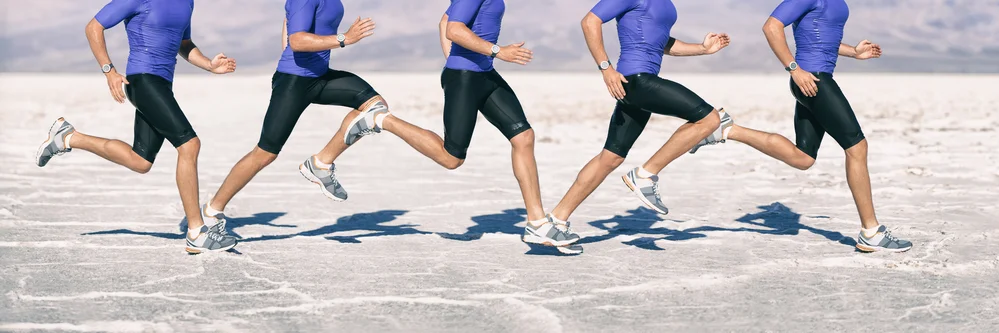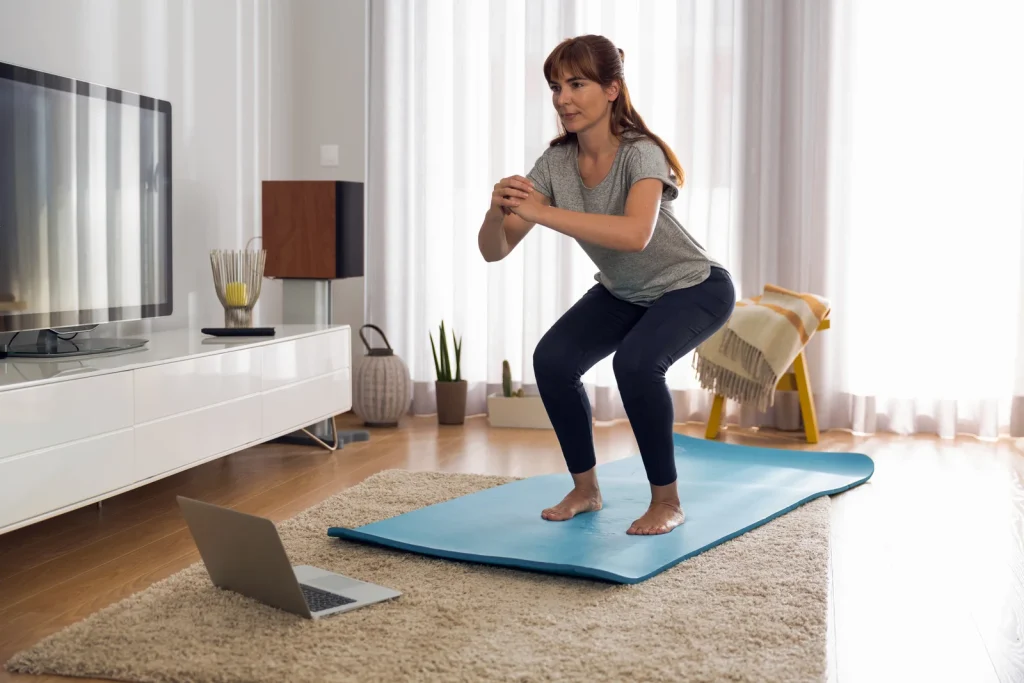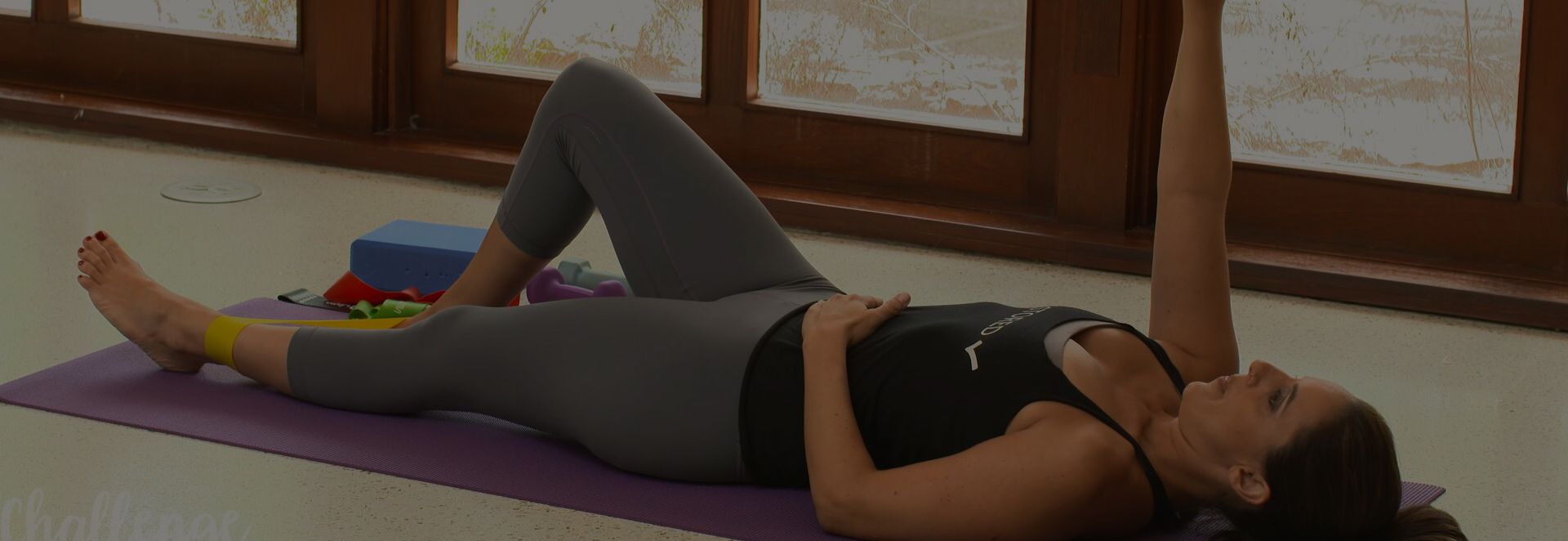The Pro’s Guide to Managing Leaking Urine While Running
4 Min Read
If you work with runners, you have undoubtedly worked with a runner who has experienced leaking urine while running, even if they haven’t explicitly discussed it with you yet. This article will give you a starting place to acquire the knowledge, strategies, and tools needed to effectively support clients, enhancing both performance and quality of life for athletes.
Table of Contents
Why you need to learn more about running and urine leakage
While many athletes struggle with urinary incontinence, not nearly enough of them seek help. A survey of 803 study subjects found that 16% of participants experienced urinary incontinence during running. Yet the vast majority (70%) of these people did not seek help for the issue. If you’re a fitness professional, coach, or physical therapist working with runners, you should be aware of the prevalence of this issue, so that you can help them address it.
The impact of urine leakage on runners’ performance may take many different forms: some people may even quit their sport from the discomfort and inconvenience. Addressing urine leakage in your clients who are runners has the potential to not only improve their performance at running, but also increase their overall quality of life.

Understanding urine leakage in runners
The primary type of urine leakage affecting runners is stress urinary incontinence–the involuntary leaking of urine when the pelvic floor experiences a heavy load and is unable to manage it. This leaking can happen due to coughing, sneezing, jumping, etc., but is of higher prevalence in female athletes, especially in high-impact sports such as volleyball, running, and weightlifting.
Other types of urinary incontinence are:
- Urge incontinence: involuntary leaking of urine accompanied by a strong sense of urgency, usually due to overactivity of the tissue that composes much of the bladder (the detrusor).
- Overflow incontinence: leakage of urine because the bladder is too full, and can be caused by a blockage of the bladder outlet or a lack of tone in the detrusor.
- Functional incontinence: environmental or physical barriers to toileting that lead to incontinence.
The science behind urine leakage and running
Because running requires a higher impact than walking, there are many elements that can have a larger impact on the body as a whole and the pelvic floor specifically.

The running gait cycle consists of the following phases:
- Loading: a shock absorption phase from when the foot lands on the heel to a midfoot/flat position
- Midstance: the shift from shock absorption to forward movement (propulsion), when the forefoot is in contact with the ground
- Propulsion: toe-off, pushing the body forward
- Initial swing/Float phase 1: after toe-off, the phase where the foot begins to swing back, with both feet off the ground
- Terminal swing/Float phase 2: completion of the movement, with the opposite foot preparing to land.
The single-leg impact nature of running requires the runner to manage both balance and force, to a much greater extent than with walking. The pelvic floor must also support the increased forces of running. High-impact activities, in general, exacerbate urine leakage by placing loads on the pelvic floor that exceed what the pelvic floor muscles are capable of withstanding. Athletes who participate in high-impact sports tend to have overactive pelvic floor muscles, often in response to the demands the sport places on the body. Part of the function of the pelvic floor muscles is to manage intra-abdominal pressure in conjunction with the rest of the core system. When an event, such as a run or a weightlifting PR, causes an increase in intra-abdominal pressure, leaking can occur.
A further contributing factor to leaking during running, in particular, may be an overall alignment of the body. If a runner leans backward while running instead of leaning slightly forward, the pelvis is unable to adequately support the weight of the torso as the runner moves. The foot lands too far ahead of the center of mass, and the force of impact is much higher than if the foot lands below the center of mass. This restriction of movement in the pelvis also affects the upper body and core; a lack of pelvic stability may inhibit a runner’s access to an effective contralateral arm swing, and may also affect their ability to engage their core, diaphragm, and pelvic floor effectively.
Screening and identifying at-risk clients
Ideally, your intake process should include a few questions directly addressing pelvic floor function, such as the following:
- Have you ever leaked urine while running, or felt an uncontrollable urge to urinate while running?
- Have you given birth? If so, what was your birthing and recovery process like?
- Do you find that your underwear or shorts are damp with urine after a run?
- Do you often feel like you have “tight hips”?
- Do you have any issues such as constipation or difficulty emptying your bladder?
- Do you experience pain during or after intercourse?
Of course, not every pro in every situation can be so direct, but we can make it easier for our clients to talk about these issues by modeling direct, shame-free, compassionate language. Let’s normalize conversations about bodily functions when we’re working with people’s bodies. If your client is reluctant to discuss these kinds of questions, you can also look for the following as you assess them:
- What’s their posture like as they run? Do they lean forward or backward? Is one hip dropping more than the other? Do they have good upper body control?
- Where are the parts of their body that do seem to be routinely tight or problematic?
- How do they describe their routines around running? Listen for stories about needing to make a lot of pit stops, wear incontinence pads, or change clothes during training or races.
- What other activities do they engage in? Are there particular activities they avoid (e.g., jumping on trampolines), and why?
Once you have a sense of whether your client is leaking and why, it’s time to work on some strategies. It is always a good idea to refer your client to a pelvic health specialist for any diagnosis or strategies (such as internal pelvic muscle release) that may be out of your scope of practice. But there’s plenty you can work on right away.
Running and urine leakage: preventative strategies
Runners, like all athletes, can benefit from cross-training. Targeted exercises to improve their core and pelvic floor function are an excellent way to counteract the impact of running on the whole body.
Proper running form and techniques to minimize impact on the pelvic floor
A note on form: The best form for your running client is one that is sustainable for them in the long term. You might find that working on the areas where their movement is restricted helps their body find a more effective form over time. However, there are a few training tricks you can offer in order to help their body learn faster.
One of my favorite tips is simple: have your runners walk and run uphill. Doing so will naturally shift their posture forward enough to engage the glutes and help them access a posterior-driven push-off. Once they can experience it uphill, see if they can transfer the movement to a less steep incline and then to flat surfaces.
As I noted above, you will also want to make sure that your client’s arm swing appropriately complements their stride.
Does your client have tight hips?
Many runners will present with tight hips, and a correspondingly overactive pelvic floor. You’ll want to assess your client’s hip mobility, balance, and stability through a variety of movements, such as single-leg squats. Looking at their standing alignment and where their pelvis tends to hang out when they’re *not* running can be another place to gain insights into their patterns. You’ll also want to check their core engagement technique and breathing patterns.
Ask questions and get curious as you have them move through something like this squat progression:
- Stand with feet parallel and pelvis-width apart.
- Hinge at the hips and bend the knees to come into a shallow squat. The shin should be vertical and the pelvis and spine should be neutrally aligned–if your client tucks their pelvis, have them come up until they can perform this movement with the pelvis untucked.
- See if your client can feel the way that their body weight is supported–e.g., do they feel their glutes engage if they press through their heels?
- Slowly shift the weight onto one foot, optionally lifting the opposite foot just off the floor.
- Then, return to the evenly distributed weight and repeat on the opposite side.
What you’ll see, often, is they struggle to maintain a neutral pelvis, or one side where the hip wants to swing farther out as the weight shifts. You might also notice a shallow breathing pattern, or a tendency to bear down as they’re in the single-leg position. Thankfully, this assessment is also a corrective that your client can practice regularly. They can build on this squat exercise with the additional exercises below.
Make sure that you also encourage your client to do mobility and release work–here are a couple of examples of videos I might suggest working into their weekly rotation.

Tailored exercise programs
The first step toward training your pelvic floor to be strong in a dynamic movement system is lowering the load. This might mean taking some time off from running in order to rehab the pelvic floor, either via PT or with a program like Restore Your Core®. Taking time off is one of the hardest things for my clients who run to do, and it’s understandable. But, it’s important to begin by training the body to handle a variety of movements and tasks without harmful compensation patterns. The good news is that walking is a great way to increase and maintain pelvic floor health, and your clients who crave intensity may find that they love walking uphill to get those endorphins flowing.
I love the following progression of exercises to help train the body to manage load better while running. These four exercises help provide a bridge between rehab and getting back to running. For those of you who prefer to watch, this is a video version. How long your client should perform these before testing out their pelvic floor on a run is going to vary depending on your client’s body. When in doubt, slow down.
I usually recommend that clients perform 10 reps x 3 sets. Have them practice the first exercise for a few weeks until it’s easy, then progress to the second, etc.
- Slow squat to quick heel raise: Slowly lower into a shallow squat, then quickly move into a standing heel raise. Allow the arms to swing upwards with momentum. Slowly lower back down again. This movement is slow on the way down and quick on the way up. Holding on to something for balance is fine.
- Slow heel raise to quick squat: From a standing position, slowly come into a heel raise. Quickly drop into a squat–it does not need to be a deep squat. Slowly up, quickly down.
- Staggered squat: Step one leg back into a slight lunge. From there, perform a single leg heel raise on the front foot, driving the back knee forward and up. Step back into the lunge, there is no need for it to be a deep lunge.
- Loaded staggered squat: Build on the previous exercise by holding a weight in your hands– can start with as few as 2-3 pounds.
Beyond the mat and the road
Your client’s issues with leaking pee while running may not resolve with exercise alone, although there is robust evidence that exercises can vastly improve pelvic floor function while running. It is always worth making sure that any other issues that could be contributing to the leaking have been addressed by your client’s healthcare providers.
Constipation, excessive caffeine intake, or even drinking too much water right before running can contribute to leaking urine while running, so make sure that your client is aware that these can also be factors to address.
Final thoughts: be shameless
While urine leakage is incredibly common, and while it’s becoming more normal to hear it discussed openly, your clients may need you to model being direct and open to this conversation. You can make this easier by using anatomical terminology for all the body parts involved (“vulva” instead of words like “hoo-ha” or “privates,” for example).
You can also acknowledge that sometimes talking about our bodies can feel awkward or silly–that’s not your client’s fault, but the fault of a culture that tells everyone that their body is only worthy of love if it meets specific, unrealistic expectations. When you model this kind of shame-free tone, you encourage your clients to communicate more openly. At the same time, if your client has a trauma history that makes this kind of conversation difficult, you might check in with them about what does work. They are the experts on themselves.
In an ideal world, we would talk about pelvic floors the same way we talk about hamstrings: as parts of the body that sometimes need a little extra help working the way we want them to. Especially for athletes, let’s normalize the importance of addressing urine leakage for the sake of their performance and long-term pelvic health.
FAQ
1. How can I approach the topic of urine leakage with my clients?Approach the topic with sensitivity and empathy. Start by normalizing the conversation around pelvic floor health and urinary incontinence. Encourage open dialogue by assuring confidentiality and offering support. Use educational materials and resources to provide information about the causes, management, and treatment options for urine leakage.
2. What are the first signs of urine leakage in runners I should look out for?Signs of urine leakage in runners may include a sudden urge to urinate, a feeling of pressure or discomfort in the bladder, involuntary urine leakage during running, and frequent urination. Additionally, runners may experience dampness or wetness in their underwear during or after exercise.
3. Can urine leakage while running be completely cured?While a complete cure may not be possible for everyone, many runners can significantly improve their symptoms through pelvic floor exercises, lifestyle modifications, and possibly medical interventions. Consult a healthcare professional for an accurate diagnosis and personalized treatment plan.
4. What should I advise my clients to do immediately if they experience leakage while running?If a client experiences urine leakage while running, advise them to stop and take a break if needed. Encourage them to empty their bladder before resuming exercise. Suggest wearing absorbent pads or specialized undergarments designed for urinary incontinence during workouts. And as always, encourage them to consult a healthcare provider for further evaluation and guidance.
5. What are the best hydration practices for runners with urine leakage issues?Encourage runners with urine leakage issues to maintain adequate hydration by drinking water regularly throughout the day. However, they may need to adjust their fluid intake closer to their running sessions to avoid overfilling the bladder. Sipping water rather than gulping it down can help prevent excessive bladder filling. Additionally, avoiding caffeine and alcohol, which can irritate the bladder, may be beneficial.
6. Are there any professional certifications focused on pelvic floor health I can pursue?The Restore Your Core® Method has helped over 10K people heal, and that number is always rising. We will give you the tools and knowledge to combat the status quo and help your clients effectively address their pelvic floor issues.
If you’re serious about truly mastering the pelvic floor and guiding clients to safely and effectively access it and heal through movement, this is the training where you get it all.



